You might be familiar with a popular Latin and Caribbean dish called Moro de Gandules, or Arroz Con Gandules. It’s a rice and bean dish that is popular in Puerto Rico and the Dominican. It’s often served on special occasions, but this recipe can also be made on any day of the week for a hearty meal.
The recipe makes coconut flavored rice mixed in with gandules (pigean peas), which are full of fiber and protein, so it makes enough food to keep you satisfied through lunch or dinner!
What is gandules
Gandules – “pigean peas” are a type of bean – it might be a little bit foreign to the average American Kitchen but they are easy to be found in some ethnic grocery stores, or the Mexican aisle at your local grocer.
Puerto Ricans regularly use gandules in their rice dishes. In this recipe for Moro De Gandules, we’ll be using an aromatic blend of green peppers, onion, garlic, and black pepper to go with our coconut flavored rice and pigean peas.
Why you’ll love this rice (hint: it’s cooked with coconut milk instead of water)
Your love of rice will grow even more with this recipe. Rice is a staple food in many cultures around the world, but it can be boring to eat on its own.
This gandules rice recipe is super healthy and tasty because it’s cooked with coconut milk instead of cooking the rice in water or broth (like most risottos).
Rice is also naturally gluten-free, and the coconut milk is vegan and nut-free. This makes this dish suitable for most dietary needs.
Coconut milk also adds a creamy texture that makes this dish feel like a treat!
Once the coconut milk rice is cooked, we’ll add in the pigeon peas and the rest of the spices and seasoning and let it simmer. The result is a one-pot vegan rice dish that is hearty and flavorful.
What kind of rice do you use for moro de gandules
As with any rice dish, the type of rice you use will go a long way toward determining its texture and flavor. You want a perfect creamy rice but not mushy rice, so picking the right type of rice is important!
You can use long grain white rice, brown rice, jasmine rice, basmati, Arborio, or other short grain rice.
In case you didn’t know the difference:
- Jasmine rice is typically what Vietnamese, Chinese, Thai, and Koreans serve
- Basmati is found in Indian dishes
- Arborio is found in Mexican dishes
For this particular recipe we prefer basmati or arborio – they are less sticky than jasmine, which is more suitable for this rice dish. Jasmine might make this dish too mushy.
What pot to use for moro de gandules
Calderos are traditionally used for making rice dishes like arroz con gordules.
Calderos are a heavy earthenware pot that originated in Spain and Portugal, but there are many versions of them from different countries.
You can use a cast iron pan with a lid if you don’t have access to one of these pots, or use a dutch oven.
What are the ingredients?
- medium onion
- 2 cloves garlic
- carrots
- bell pepper
- celery
- medium tomatoes (or 1tbsp tomato paste will work!)
- 1 tbsp coconut oil or olive oil
- dried thyme
- dried oregano
- fresh cilantro
- coconut milk
- gandules
- rice grain of choice (go with arborio or Mexican rice for this recipe)
What protein can I use for this recipe
For this recipe, you can use any protein. You could even make it vegetarian if you wanted to by substituting the fish for extra beans and rice. If you’re still unsure about what type of protein to use, here are some suggestions:
- Grilled meat or fish (like shrimp). Use little spices here. You don’t want to compete for flavors with the rice – this dish has plenty of flavors already, so meat that aren’t marinated or heavily spiced works better.
- Keep it vegan and use deep fried tofu – it absorbs the flavor very well in this dish!
How to store this rice
Store in airtight container in the fridge for up to 3 days.
How do I reheat this rice
Reheat your rice in the microwave by placing in a microwave-safe bowl and covering with plastic wrap (make sure you poke a few holes first with a fork) Microwave on high for about 1 minute, uncover and mix, then repeat for another minute.
For oven reheating I actually prefer to put it in directly from the fridge – as the oven is warming up to 350 (instead of waiting for the oven to preheat before putting it in). This way, the rice heats slowly and is less likely to be dry. Once it reaches 350, leave in for an additional 8-10 minutes.
If you don’t want to use your oven, put the rice into a slow cooker on low heat for about 30 minutes or until hot enough for serving
This recipe is not only highly nutritious but also very flavorful.
This recipe is not only highly nutritious but also very flavorful. It’s a great side dish to serve with many different types of meat—beef, chicken and pork are all good choices.

The Ingredients
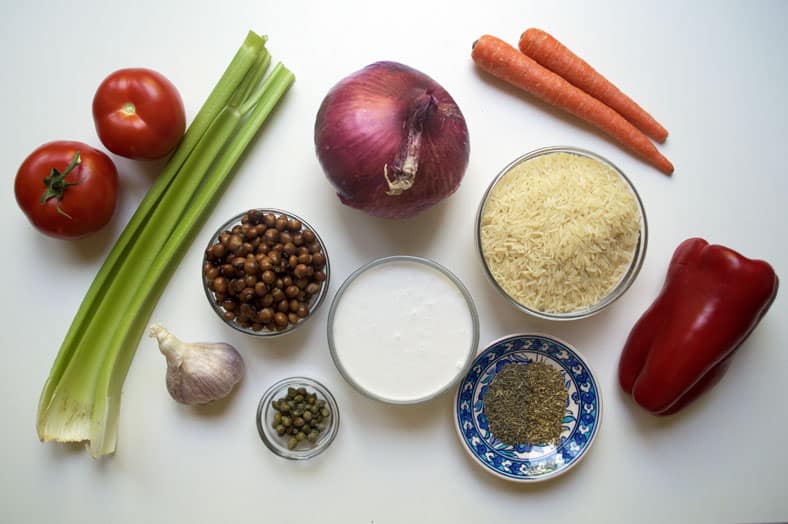
About the Recipe
For as flavorful a dish as this comes to be, it is remarkably easy to create. Still, there are a few key components to a good moro de guandules that need to be addressed: the sofrito, the leche de coco and the guandules.
Enter the Sofrito
Herein is one of the key components of any West Indies cuisine: the sofrito.
The concept of the criolla sofrito is based on its occidental Mediterranean ancestors. The Italian soffrito and the Catalan sofregit are both culinary concepts that have been around at least since the 12th century.
As a broad generalization – though it differs from nations, cultures and regions – the idea behind sofrito is to saute aromatic ingredients together in olive oil until the vegetables have softened. This freshly made sofrito constitutes the base of your dish onto which your later components are added.
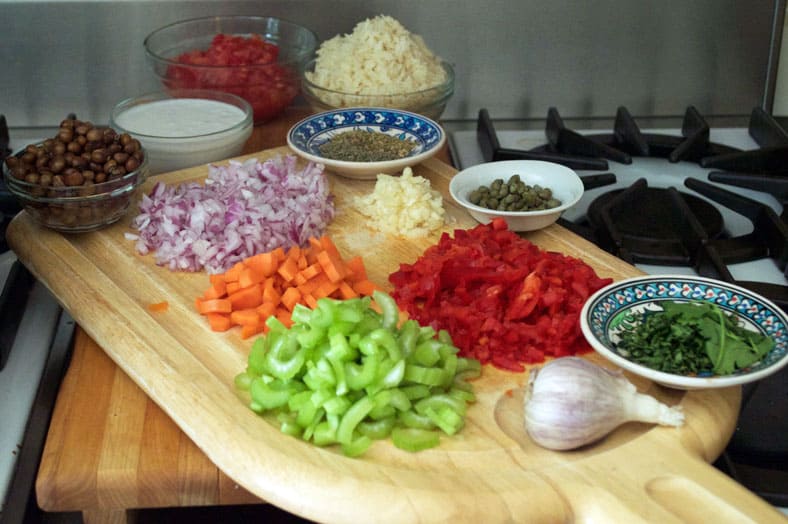
Generally, the Dominican sofrito is considered a bit milder and emphasizes more the use of ingredients like onions, garlic, and cilantro instead of spices. Other ingredients for the sofrito – also referred to as sazón – might include bell peppers, tomato paste, oregano, thyme and any other type of fresh herb or vegetable you can find.
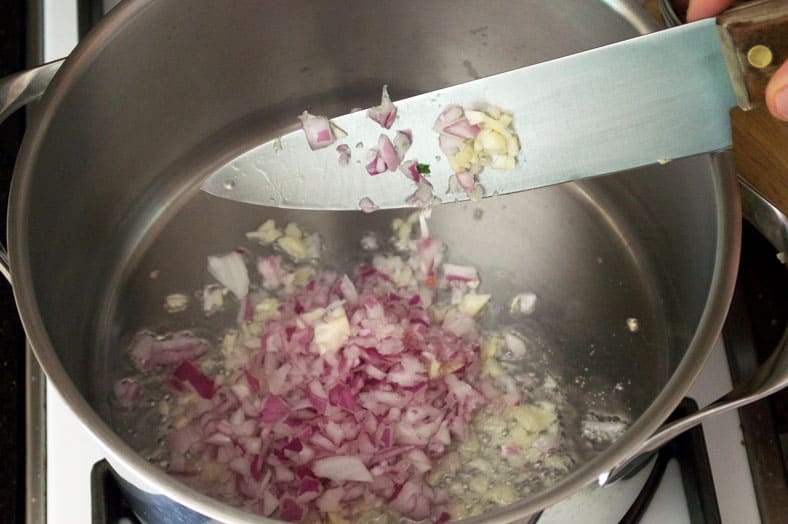
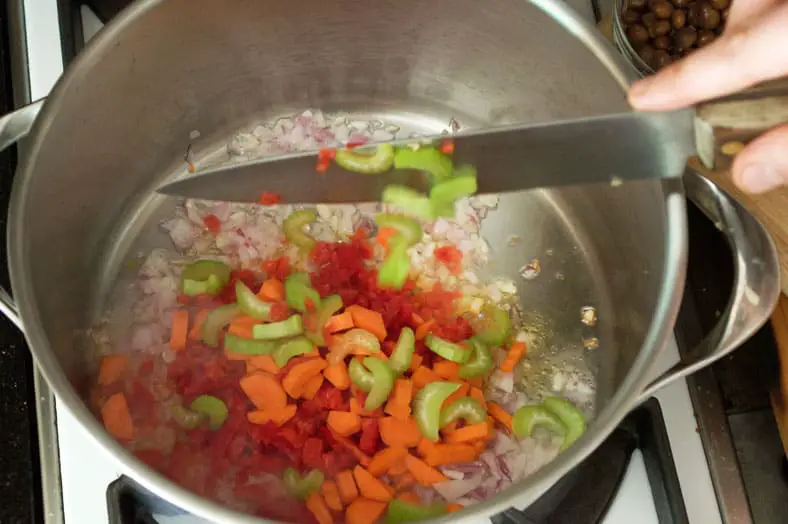
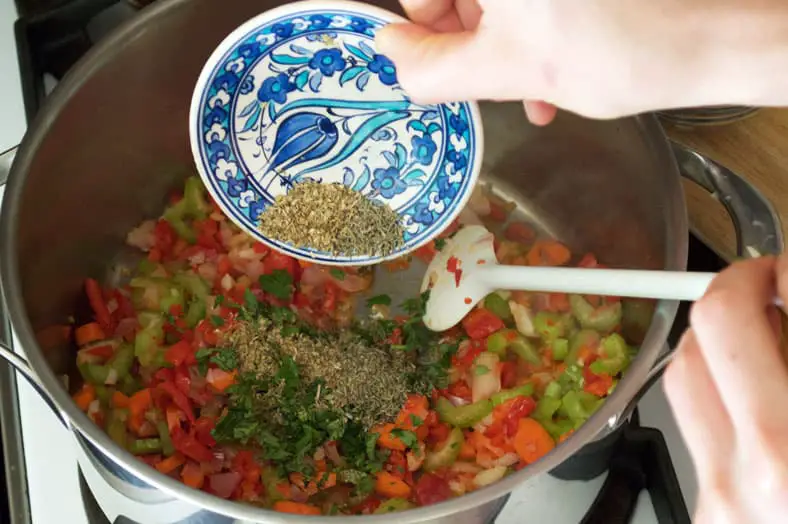
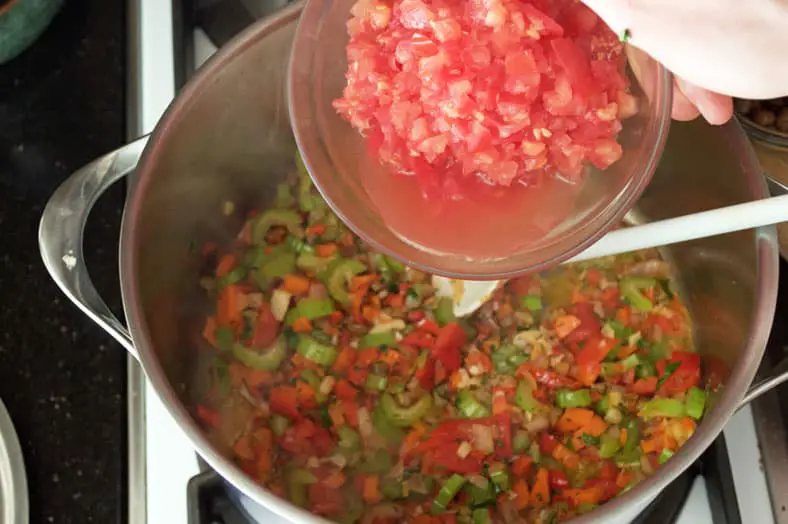
For moro de guandules, the sofrito is pretty straightforward. You start by taking your aromatic ingredients over a higher heat in order to saute and soften them. From there, you’ll then add in your pungent herbs and, in some cases (like ours), tomato paste or even fresh tomatoes.
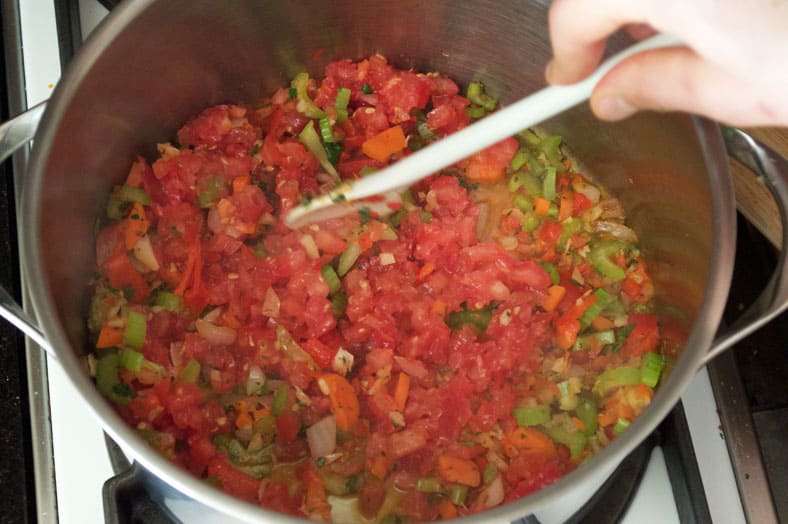
Once everything has cooked together and softened a bit, you can focus on the next piece: the leche de coco.
Leche de Coco, or Coconut Milk
For most moro de guandules recipes, you’ll absolutely need a hefty helping of coconut milk added in.
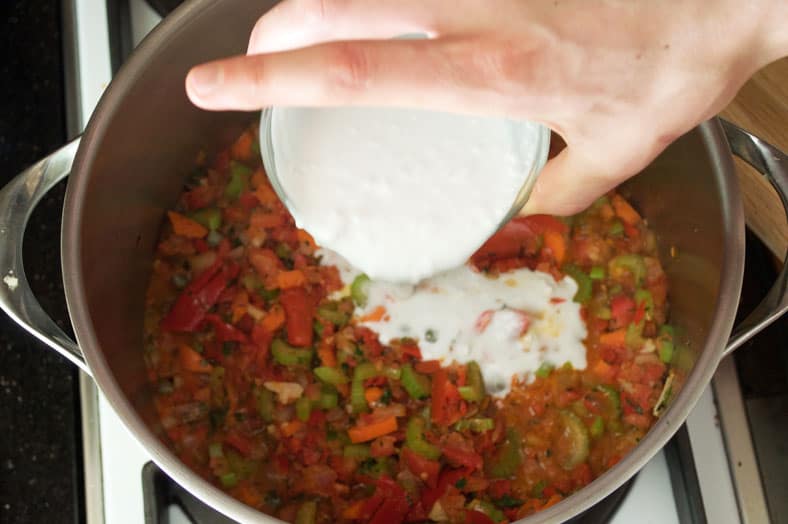
Part of the reason is because of the particular part of the Dominican Republic, Samaná, from whence this moro recipe hails. Located in the northeastern part of the Dominican with a coastline along the Atlantic Ocean, Samaná is a region with an incredibly vibrant and tropical vegetation that has made its way into local dishes.
Samaná is also known as the main hub for cocolos, or Dominicans of non-Hispanic descent. A large part of the Samaná population are actually of American descent as freed black slaves would emigrate down to the Dominican Republic in the 1800s.
As a result of what you can call some “non-traditional thinking,” a Samaná resident thought to cook rice in a broth with added coconut milk, an idea which gave birth to the unique touch that moro de guandules has as a recipe.
As your sofrito/sazon is ready to go, you’ll add in your coconut milk to create a nice soupy consistency into which your rice and guandules will cook through next.
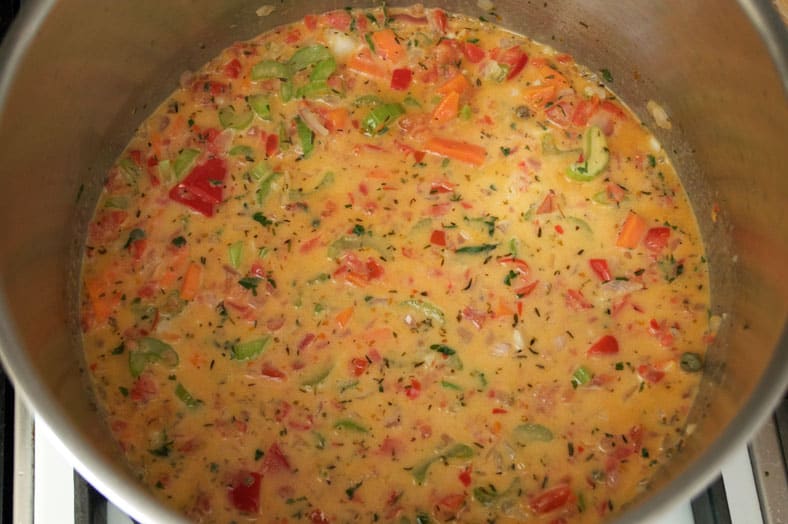
All about Guandules
Since dropping of the y cristianos part, there has been a greater flexibility when it comes to Dominican moro dishes overall. So long as there is some sort of union between rice and beans, it’s considered a moro dish. You can have red bean moro, black bean moro, pinto bean moro and so on…
But for a true moro de guandules, you need to use the pigeon pea.
Pigeon peas, or guandules, are a particularly robust legume that’s found its way into the hearts (and bellies) of Dominicans. It’s a odd smaller type of legume that cannot be eaten uncooked, although when it is, it gives a more distinctly firmer texture and meatier flavor than other types of bean-driven types of moro.
The guandules themselves need not go in until later into your moro, after the sofrito and the broth has been made for both rice and pigeon peas to cook in.
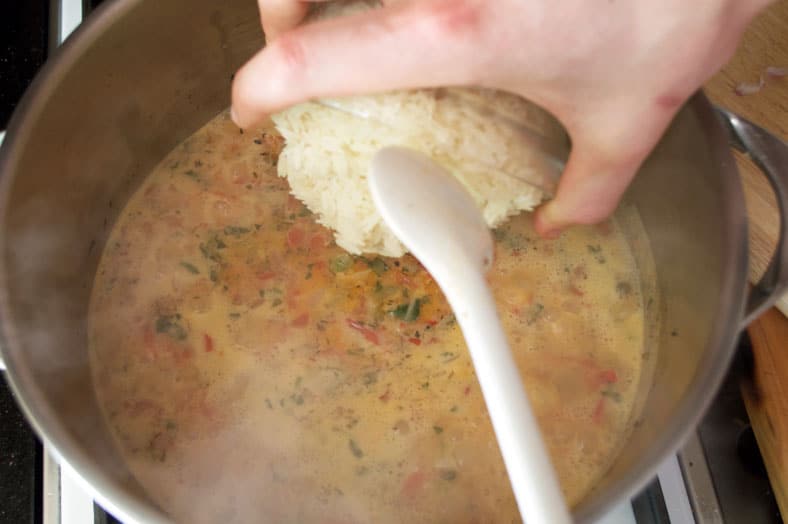
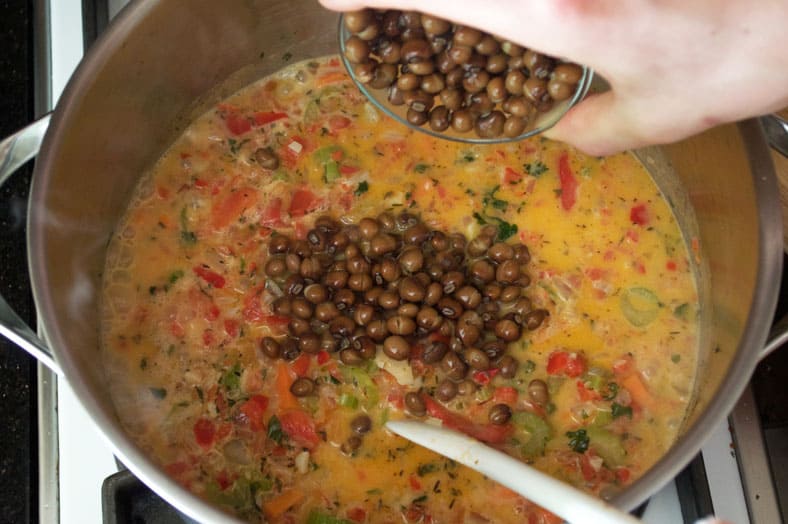
After at least 10 minutes of simmering and cooking in your sofrito and coconut milk broth, your rice and guandules should be cooked and ready to enjoy!
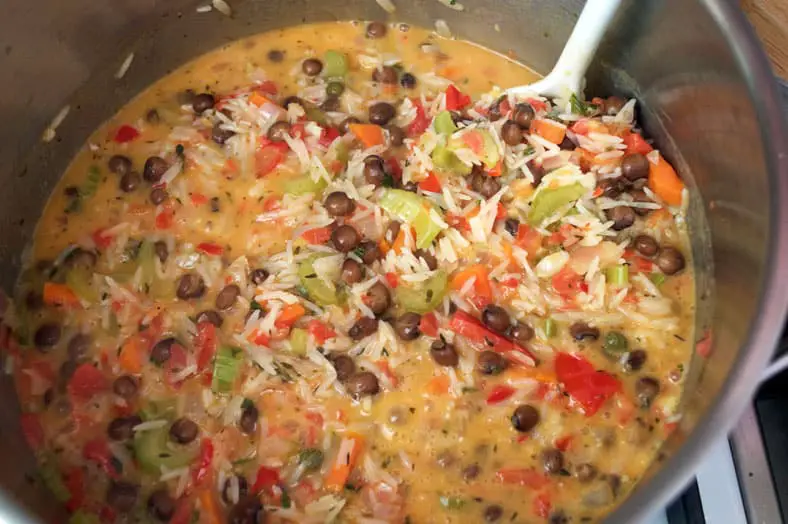
Our Take on the Recipe
It’s always so enjoyable when we find a “no brainer” source recipe, which is what we had with this recipe from Dominican Cooking. Still, even with the straightforwardness, we still made a few of our own adjustments.
For one, we swapped out the olive oil in favor of coconut oil. The underlying reason for this was due to coconut oil’s higher smoke point, which offered us a healthy way to cook and soften the sofrito ingredients with greater intensity and less time.
From there, we made some changes to overall proportions. As lovers of garlic, we upped the amount in our recipe, and we added in carrots and more onions into the fold as well. We actually weren’t as much a fan of the olives in this moro, so we omitted them outright from our own.
Finally, in an effort to make a more manageable portion for a family (and not an army), we reduced the portions of rice and correspondingly the coconut milk and water that went in. As an added bonus, we really liked the increased proportion of guandules to rice that this caused.
Other than that, the recipe is incredibly simple to make, and it carries a flavor that you don’t want to miss.
Enjoy!
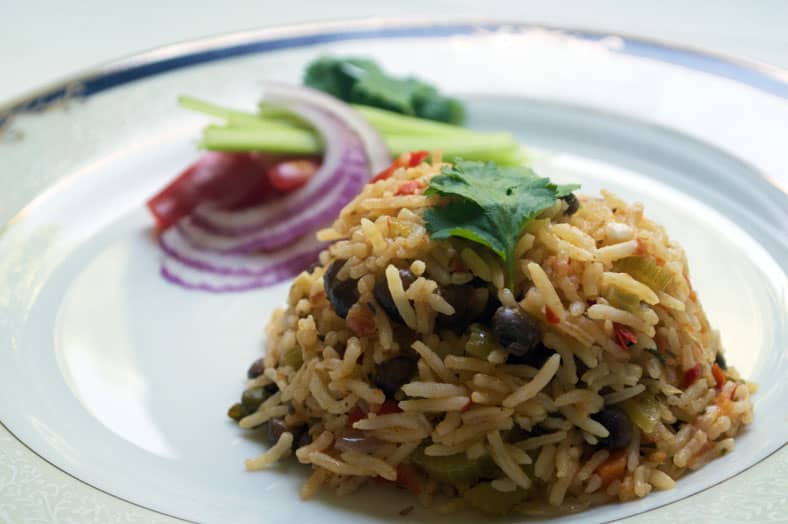
Food styled by Phil Roepers

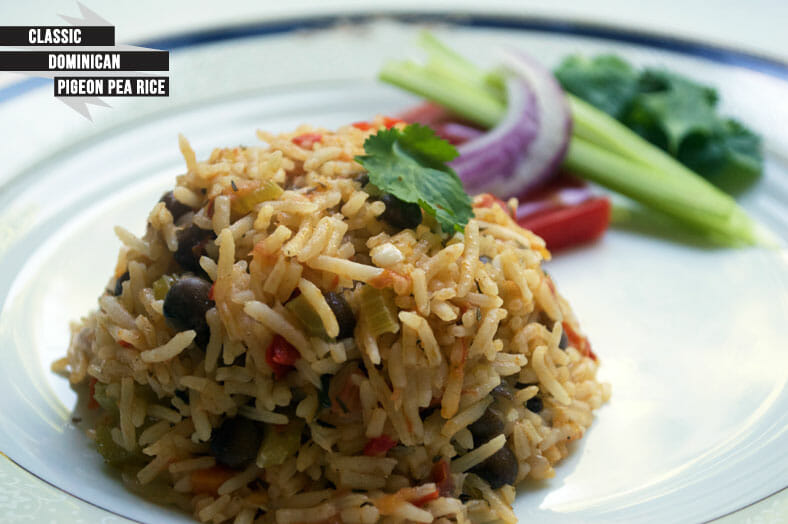
This rice dish looks so yummy. Can’t wait to try it out next week!